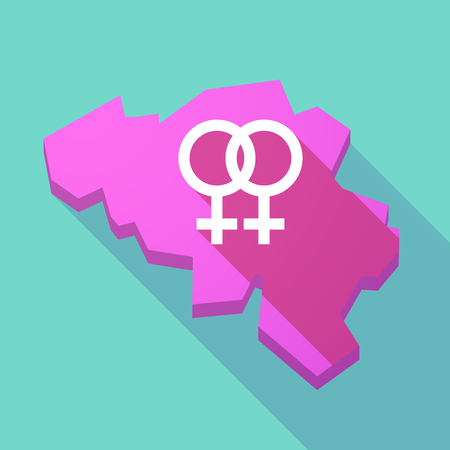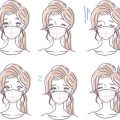What Is Cystic Acne?
Cystic acne is considered one of the most severe forms of acne, often leading to painful, inflamed breakouts that occur deep beneath the skin’s surface. Unlike common whiteheads or blackheads, which develop closer to the skin’s surface, cystic acne forms when pores become clogged with excess oil, dead skin cells, and bacteria. This triggers a significant inflammatory response, resulting in large, red, and tender cysts that can linger for weeks or even months.
How Does Cystic Acne Develop?
The development of cystic acne starts when a pore gets blocked by sebum (skin oil) and dead skin cells. Bacteria then multiply inside the clogged pore, causing swelling and infection deep within the skin layers. This results in a swollen lump full of pus — known as a cyst — which can be very painful to the touch.
Cystic Acne vs. Other Types of Acne
| Type | Appearance | Depth | Pain Level |
|---|---|---|---|
| Whiteheads/Blackheads | Small, surface bumps | Surface | Mild or none |
| Papules/Pustules | Red or pus-filled bumps | Slightly below surface | Mild to moderate |
| Cystic Acne | Large, red, swollen cysts | Deep under skin | Severe |
Why It Matters
Cystic acne is not just a cosmetic issue—it can lead to permanent scarring and significant emotional distress if not treated properly. Understanding how it differs from other types of acne is essential for finding the right treatment approach.
2. Common Triggers and Causes
Cystic acne is more than just an occasional breakout; it often results from a combination of internal and external factors that are particularly relevant to everyday life in the United States. Understanding these common triggers can help you manage and prevent severe acne flare-ups.
Hormonal Changes
One of the leading causes of cystic acne is hormonal fluctuation. This is especially common during puberty, menstrual cycles, pregnancy, or due to conditions like polycystic ovary syndrome (PCOS). Hormones called androgens increase oil production in the skin, which can clog pores and lead to deep, painful cysts.
Stress
Chronic stress is a major trigger for cystic acne in many Americans. Stress hormones like cortisol can cause your skin to produce more oil, making breakouts worse. The fast-paced lifestyle and work-related pressures common in the U.S. contribute significantly to this factor.
Genetics
If your parents or siblings have struggled with cystic acne, you may be more likely to develop it yourself. Genetics play a crucial role in determining how your skin reacts to hormonal changes and environmental stressors.
Lifestyle Factors
Everyday habits and routines can also impact your skin’s health. Diets high in processed foods, dairy, or sugar—common in American eating patterns—may contribute to inflammation and worsen cystic acne. Additionally, lack of sleep, poor skincare routines, and exposure to pollution can further aggravate the condition.
Overview of Common Cystic Acne Triggers
| Trigger | Description | U.S.-Specific Factors |
|---|---|---|
| Hormonal Changes | Increased androgen levels boost oil production | Puberty, birth control use, PCOS prevalence |
| Stress | Elevates cortisol, leading to oily skin | Fast-paced work culture, academic pressure |
| Genetics | Family history increases risk of severe acne | Diverse genetic backgrounds across the U.S. |
| Lifestyle Choices | Poor diet, lack of sleep, improper skincare | Processed food consumption, urban pollution |
Key Takeaway:
Cystic acne is influenced by a variety of triggers that are especially prevalent in American society. By identifying your personal risk factors—whether hormonal, genetic, or lifestyle-related—you can take steps toward effective management and prevention.
![]()
3. The Impact on Skin and Confidence
Cystic acne does more than just affect the skin physically—it can leave a lasting mark on self-esteem and mental health, especially in American culture where appearance often plays a significant role in first impressions and social interactions. The physical effects of cystic acne include deep, painful bumps, redness, swelling, and sometimes even permanent scarring. These symptoms can make daily skincare routines more challenging and may limit makeup options or the desire to participate in activities like swimming or sports.
Physical Effects of Cystic Acne
| Effect | Description |
|---|---|
| Painful Bumps | Deep inflammation causes discomfort and tenderness. |
| Redness & Swelling | Visible irritation, often hard to conceal with makeup. |
| Scarring | Permanent marks or indentations left after healing. |
Emotional Effects: American Perspectives
In the United States, clear skin is frequently associated with health, youthfulness, and attractiveness—qualities that are highly valued in media and everyday life. This cultural emphasis can intensify feelings of self-consciousness for those dealing with cystic acne. Many Americans report avoiding social situations, struggling with anxiety or depression, and experiencing a negative impact on their self-image due to persistent breakouts.
Mental Health Considerations
- Increased stress and anxiety about appearance
- Lowered self-confidence in both personal and professional environments
- Potential for social withdrawal or isolation
Support Is Available
The conversation around mental health has grown significantly in America over recent years. Open discussions about acne struggles—both online and offline—have helped reduce stigma and encourage individuals to seek support from dermatologists, counselors, or support groups. Addressing both the physical and emotional effects of cystic acne is crucial for overall well-being.
4. Effective At-Home Strategies
Managing cystic acne at home can be challenging, but with the right approach, you can help minimize breakouts and soothe your skin. Here are practical, U.S.-preferred tips and strategies that you can incorporate into your daily routine.
U.S.-Preferred Skincare Routine
Consistency is key when it comes to skincare. The following table outlines a typical American skincare routine designed for those dealing with cystic acne:
| Step | Product Type | Key Ingredients | Tips |
|---|---|---|---|
| 1. Cleanser | Gentle Foaming or Gel Cleanser | Salicylic Acid, Benzoyl Peroxide | Use twice daily; avoid scrubbing aggressively |
| 2. Treatment | Spot Treatment or Serum | Benzoyl Peroxide, Sulfur, Niacinamide | Apply directly to affected areas after cleansing |
| 3. Moisturizer | Oil-Free, Non-Comedogenic Lotion | Ceramides, Hyaluronic Acid | Hydrate without clogging pores |
| 4. Sunscreen (AM) | Broad-Spectrum SPF 30+ | Zinc Oxide, Titanium Dioxide | Use daily to prevent dark spots and irritation |
Recommended Over-the-Counter Products in the U.S.
- Benzoyl Peroxide: An effective antibacterial treatment available in strengths ranging from 2.5% to 10%. Popular brands include Neutrogena and PanOxyl.
- Salicylic Acid: Helps unclog pores and reduce inflammation; found in cleansers like CeraVe and Clean & Clear.
- Sulfur Treatments: Used for spot-treating stubborn cysts; check out Mario Badescu Drying Lotion.
- Adapalene Gel (Differin): A topical retinoid now available over-the-counter, recommended for persistent acne.
Lifestyle Adjustments for Better Results
- Avoid Picking or Popping: This can lead to further inflammation, scarring, and infection.
- Laundry Hygiene: Wash pillowcases and face towels regularly to remove bacteria and oil buildup.
- Ditch Heavy Makeup: Opt for non-comedogenic and oil-free makeup if needed, and always remove makeup before bed.
- Dietary Considerations: While research is ongoing, some people find that reducing dairy or high-glycemic foods helps reduce flare-ups.
- Manage Stress: Practice mindfulness, yoga, or regular exercise—stress hormones can trigger breakouts.
If At-Home Treatments Arent Enough…
If your cystic acne persists despite these strategies or worsens significantly, consider consulting a board-certified dermatologist in the U.S. They can provide prescription treatments or discuss advanced therapies tailored to your needs.
5. When to See a Dermatologist
Cystic acne can be stubborn and distressing, so knowing when to seek professional help is essential. If you notice large, painful cysts that don’t respond to over-the-counter treatments, or if your acne is causing emotional distress, scarring, or affecting your daily life, it’s time to consult a dermatologist. Early intervention can prevent long-term skin damage and improve your quality of life.
Recognizing Severe Cases
- Painful, deep cysts that last for weeks
- Significant swelling or redness
- Frequent flare-ups despite home care
- Signs of infection (such as pus or fever)
- Noticeable scarring or dark spots
- Acne impacting self-esteem or mental health
Understanding Insurance Options in the U.S.
Navigating insurance coverage for dermatology visits can be confusing. Here’s a quick comparison of typical options:
| Insurance Type | Coverage for Dermatology | Referral Needed? |
|---|---|---|
| Private Insurance (PPO/HMO) | Usually covers visits; check co-pays & deductibles | PPO: Usually not required HMO: Often required |
| Medicare | Covers medically necessary dermatology (not cosmetic) | No referral needed for most cases |
| Medicaid | Varies by state; often limited to medical necessity | May require referral depending on state/program |
| No Insurance/Self-Pay | Out-of-pocket costs; ask about payment plans or discounts | No referral needed |
How to Find a Board-Certified Dermatologist in the U.S.
- Visit the American Academy of Dermatology website (aad.org/find-a-derm) for a search tool by zip code.
- Check your insurance provider’s directory for in-network doctors.
- Look for “board-certified” credentials, which ensures the dermatologist has completed accredited training and passed rigorous exams.
- Read patient reviews and ask friends or family for recommendations.
- If cost is a concern, inquire about sliding scale fees or community clinics offering dermatology services.
Your Next Steps
If you’re struggling with severe or persistent cystic acne, reaching out to a dermatologist can make a world of difference. Early treatment leads to better outcomes—don’t wait until scars form or your confidence suffers. Remember: effective help is available, and you don’t have to tackle cystic acne alone.
6. Medical Treatments and Advanced Options
For many Americans struggling with cystic acne, over-the-counter solutions aren’t always enough. That’s when it’s time to consider medical treatments prescribed by dermatologists. These options are designed to address severe inflammation, deep cysts, and prevent lasting scarring. Below is an overview of the most commonly used prescription therapies and in-office procedures available in the United States.
Prescription Medications
| Type | How It Works | Common Brand Names | Considerations |
|---|---|---|---|
| Oral Antibiotics | Reduce bacteria and inflammation | Doxycycline, Minocycline | Short-term use recommended; possible GI side effects |
| Oral Contraceptives | Regulate hormones (for females) | Yaz, Ortho Tri-Cyclen | Not for everyone; consult your doctor about risks |
| Isotretinoin (Accutane) | Decreases oil production and unclogs pores | Accutane, Claravis | Highly effective but requires monitoring due to serious side effects, including birth defects |
| Spironolactone | Blocks androgen hormones (for females) | Aldactone | Mainly for women; can cause potassium imbalance |
Professional In-Office Procedures
- Corticosteroid Injections: Dermatologists inject steroids directly into large cysts to rapidly decrease swelling and pain. This is a quick fix for stubborn or painful spots.
- Chemical Peels: Stronger than at-home versions, these peels help exfoliate dead skin cells and reduce clogged pores under professional supervision.
- Laser and Light Therapy: Devices like blue-light therapy target bacteria beneath the skin and may reduce breakouts with repeated sessions.
When to See a Dermatologist?
If your cystic acne is causing pain, not responding to OTC products, or leading to scars, it’s important to schedule a visit with a board-certified dermatologist. They can create a personalized treatment plan that balances effectiveness with safety—especially considering your lifestyle, health history, and specific skin needs.
7. Prevention and Long-term Care
Managing cystic acne is not just about treating active breakouts—prevention and long-term skin care are key for maintaining clear, healthy skin. Here’s how you can minimize flare-ups and take control of your skin’s future:
Smart Skin Care Habits
- Consistent Cleansing: Wash your face twice daily with a gentle, non-comedogenic cleanser to remove excess oil, sweat, and pollutants without stripping your skin.
- Moisturize Regularly: Even oily or acne-prone skin needs hydration. Choose lightweight, oil-free moisturizers that won’t clog pores.
- Sunscreen Every Day: Use broad-spectrum SPF 30 or higher. Many U.S. dermatologists recommend mineral-based sunscreens for sensitive, acne-prone skin.
- Avoid Picking or Squeezing: This can worsen inflammation, increase risk of scarring, and spread bacteria.
Dietary Considerations
While diet isn’t the sole cause of cystic acne, certain foods may trigger inflammation for some people. Popular advice in the U.S. focuses on balanced nutrition and reducing common triggers:
| Foods to Limit | Beneficial Choices |
|---|---|
| Sugary snacks & sodas | Fresh fruits (berries, oranges) |
| Dairy (esp. skim milk) | Leafy greens & colorful veggies |
| Highly processed foods | Whole grains (quinoa, brown rice) |
| Greasy fast food | Lean proteins (chicken, fish, tofu) |
Lifestyle Tips Popular in the U.S.
- Manage Stress: Practice mindfulness, meditation, yoga, or regular exercise—stress is a known trigger for acne flare-ups.
- Avoid Overwashing: Too much cleansing can irritate the skin barrier and worsen acne.
- Change Pillowcases Weekly: Clean bedding helps prevent bacteria and oil buildup.
The Importance of Ongoing Self-Care
Cystic acne often requires a long-term approach. Check in with a board-certified dermatologist for personalized advice and routine skin checks. Keep track of what works for you—whether it’s specific products, dietary tweaks, or lifestyle changes—and stay patient; consistency over time brings the best results. Taking care of your skin is a journey that evolves with you.


